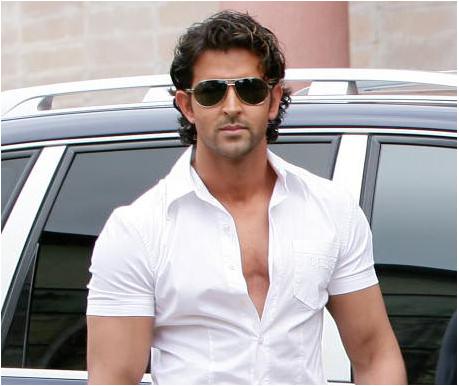If you are worried about looking good in a swimsuit this summer, you aren’t alone. Most of us have at least one thing about our bodies that we want to change, and if you follow these few easy but oh-so-useful tips, you will be turning heads on the beach in no time!
Drink your water- and then some! Water is essential to many functions in your body, especially the metabolism of fat. You should drink at least eight 8 oz. glasses of water every day, and preferably more. Water will help you feel fuller so you will probably snack a lot less.
Take a water bottle with you wherever you go, and if plain water isn’t your thing, add a no-calorie drink mix or lemon juice to make it taste better.
Keeping a written or online diary of your food intake could help you realize where you go off-track. Writing down everything you eat and drink not only accelerates your weight loss, it provides accountability. For the tech savvy among us, there are several websites and mobile phone apps that allow for the keeping of a food journal.
When you get the urge to snack, choose snack foods that are low in fat and high in fiber. Fiber will help keep you feeling full a whole lot longer, for very few calories. Bananas, pears, apples, and oranges are all great sources of fiber. Not only will fiber keep you satisfied, it will help regulate your digestive system.
To lose weight, you need to burn more calories than you take in. To lose a pound of fat, you need to burn exactly 3,500 more calories than you ingest. To figure out how many calories you need for weight loss, you first need to figure your BMR (basal metabolic rate- the number of calories you’d burn just lying in bed, doing nothing). Once you have that number, you can decide how much of a calorie deficit will provide the weight loss you’re looking for, and adjust the amount that you eat.
To create a calorie deficit, you could tinker with your diet. Try cutting out refined carbs (such as white bread, pasta, potatoes and rice), and limiting your intake of alcohol and sweets. Eat fresh fruits and vegetables, and lots of lean protein like chicken and fish. Some fats are good for you (think avocados and olive oil) so don’t cut out fat entirely.
If the idea of a highly restrictive diet doesn’t appeal to you, you could just count your calories and create a larger caloric deficit through increased exercise. However, you should talk to your doctor before you start your exercise plan. Both cardiovascular exercise and strength training are essential to getting that tight beach body, so don’t neglect either one.
Cardio doesn’t have to be done in a gym on a machine- just pop in a DVD or go for a walk! Strength training can also be done with no special equipment- crunches, lunges, squats, and push-ups are all great strength exercises and they only use your body weight for resistance.
It won’t happen overnight, but if you stay focused and don’t let temptation trip you up, you will be fitting into that smokin’ hot bikini or little black dress in no time at all. Good luck on your weight loss journey!
Drink your water- and then some! Water is essential to many functions in your body, especially the metabolism of fat. You should drink at least eight 8 oz. glasses of water every day, and preferably more. Water will help you feel fuller so you will probably snack a lot less.
Take a water bottle with you wherever you go, and if plain water isn’t your thing, add a no-calorie drink mix or lemon juice to make it taste better.
Keeping a written or online diary of your food intake could help you realize where you go off-track. Writing down everything you eat and drink not only accelerates your weight loss, it provides accountability. For the tech savvy among us, there are several websites and mobile phone apps that allow for the keeping of a food journal.
When you get the urge to snack, choose snack foods that are low in fat and high in fiber. Fiber will help keep you feeling full a whole lot longer, for very few calories. Bananas, pears, apples, and oranges are all great sources of fiber. Not only will fiber keep you satisfied, it will help regulate your digestive system.
To lose weight, you need to burn more calories than you take in. To lose a pound of fat, you need to burn exactly 3,500 more calories than you ingest. To figure out how many calories you need for weight loss, you first need to figure your BMR (basal metabolic rate- the number of calories you’d burn just lying in bed, doing nothing). Once you have that number, you can decide how much of a calorie deficit will provide the weight loss you’re looking for, and adjust the amount that you eat.
To create a calorie deficit, you could tinker with your diet. Try cutting out refined carbs (such as white bread, pasta, potatoes and rice), and limiting your intake of alcohol and sweets. Eat fresh fruits and vegetables, and lots of lean protein like chicken and fish. Some fats are good for you (think avocados and olive oil) so don’t cut out fat entirely.
If the idea of a highly restrictive diet doesn’t appeal to you, you could just count your calories and create a larger caloric deficit through increased exercise. However, you should talk to your doctor before you start your exercise plan. Both cardiovascular exercise and strength training are essential to getting that tight beach body, so don’t neglect either one.
Cardio doesn’t have to be done in a gym on a machine- just pop in a DVD or go for a walk! Strength training can also be done with no special equipment- crunches, lunges, squats, and push-ups are all great strength exercises and they only use your body weight for resistance.
It won’t happen overnight, but if you stay focused and don’t let temptation trip you up, you will be fitting into that smokin’ hot bikini or little black dress in no time at all. Good luck on your weight loss journey!












